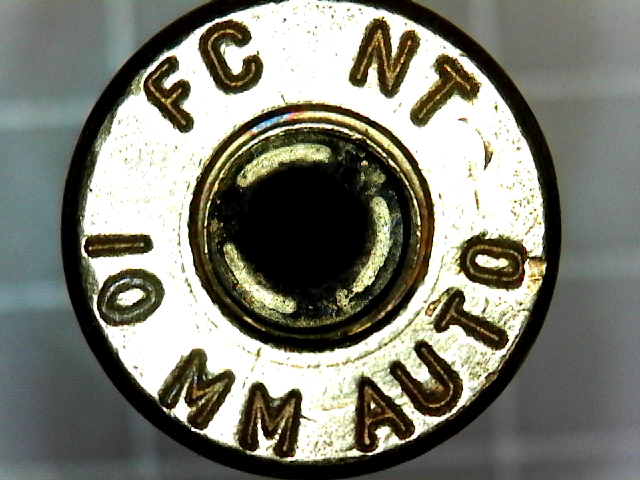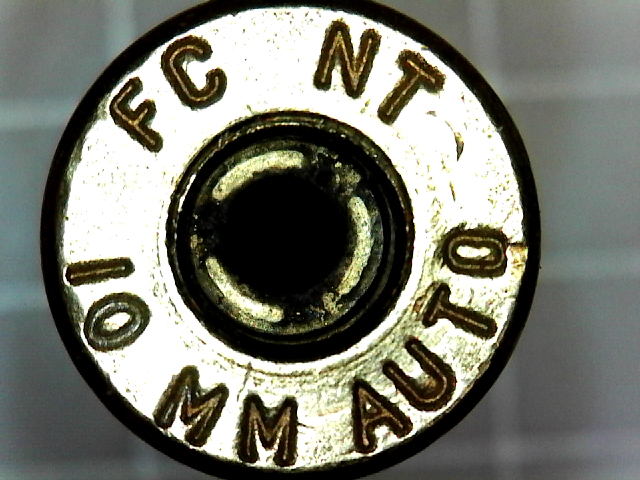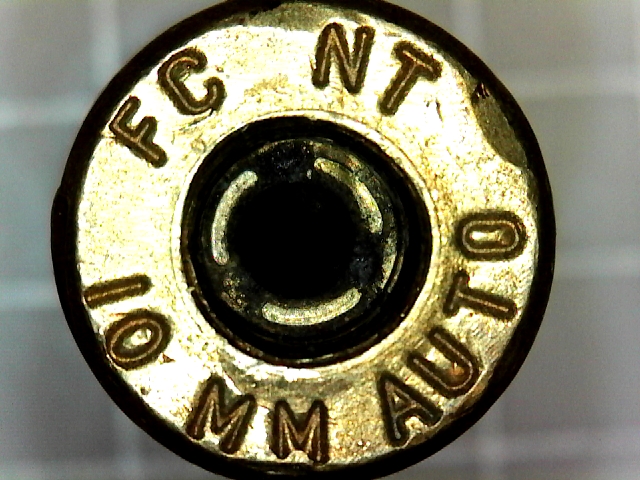A couple of years ago, I purchased a box of about 1000 rounds of 10mm brass, mixed large and small primer, at a discount. I ran them all through the tumbler together then manually sorted them out by primer size. A little more than half of them are small primers.
By original specifications, 10mm and 45 Auto brass is made to use large primers. There is a lot of ammo being made today using small primers. Small primers on 10mm or 45 Auto are not a problem to load. It can actually be an advantage. It is easy for me to switch between loading 10mm with small primers and 40S&W designed with small primers because I don’t need to reconfigure the press for large primers.
Manufacturers are using more and more small primer in traditionally large primer applications in the quest to make range ammo less harmful to the shooter, particularly those who practice indoors often, such as law enforcement and competitors. Lead styphnate is a common primer chemical component and avoiding the concentration of lead in your body is a pretty good idea, “Green” agenda notwithstanding. Non-lead primer compounds tend to be significantly more energetic; it takes less of it, so small primers make sense. Even with smaller charges in a small primer, these energetic compounds tend to drive themselves out of the primer pocket, which can lead to feeding and ejection issues and even present a danger to the shooter from gases escaping into a part of the pistol that normally doesn’t have any high pressure gases. These issues are addressed by crimping the primer into the case.
The manufacturer’s most common crimping process is basically to use a circular punch that is very slightly larger than the primer to deform the case brass around the primer to crimp the primer into the pocket. When reloading ammo. step one on the press is a die that simultaneously resizes the case and presses the spent primer out. The crimp does not adversely affect removal of the old primer. Unfortunately, the crimp does leave a burr around the primer pocket that makes seating a new primer iffy. Most often, the new primer is crushed as it snags on this burr rather than seating into the primer pocket.
That is why I still have this brass.
There are two basic ways to recondition primer pockets to remove this burr and render the case reloadable. One is to use a primer pocket reamer, a specially shaped cutting tool that physically removes the burr. I have a set of these reamers and they work quite well, though they are a little tedious to use in competitive pistol shooting quantities. It also permanently removes material from the case head, though not a large amount.
The other is to use a tool to swage the primer pocket back into the desired shape. Swaging in this case is a form of cold forging, shaping the metal under force without a significant loss of material. The process lends itself to a higher rate of production than the reamer and makes the discount price on such brass even more attractive.
In my case, I currently have several hundred rounds of small primer 10mm brass, but I am finding that small primer 45 Auto is a little less expensive than large primer. I suspect that will not always be the case as more lead-free priming becomes normal.
The RCBS tool is intended to be bench mounted, but for a quick test, I operated it as handheld. It is really easy to set up and adjust. The directions suggest sorting the brass by brand because the web of the case may be slightly different between manufacturers. Here is a crimped small primer 10mm case after depriming.
Note the ridge, most visible near the “FC NT” stamping.
After running the case through the primer pocket swager, the same case looks like this:
While adjusting the tool, I managed to get a case slightly off center, which put a slight eccentricity on one side of the pocket, barely visible adjacent to “FC” in the picture below.
I don’t think this is going to adversely affect primer seating at all because it’s only the very edge of the pocket affected, but I will pay close attention when loading this case.


